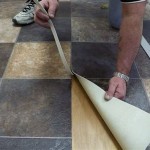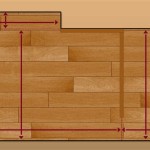Essential Aspects to Consider Before Installing Laminate Flooring
Installing laminate flooring can transform the look and feel of your space. However, to ensure a durable and aesthetically pleasing result, it's crucial to prepare your subfloor adequately. Here are the essential aspects to consider before laying down laminate flooring:
1. Subfloor Type
The type of subfloor you have will determine the preparation required. Laminate flooring can be installed over various subfloors, such as concrete, wood, vinyl, and tile. Concrete subfloors may require leveling with a self-leveling compound or underlayment. Wood subfloors need to be flat, secure, and free from moisture. Vinyl or tile subfloors may require additional preparation, such as removing old adhesive or smoothing out uneven surfaces.
2. Moisture Control
Moisture is the enemy of laminate flooring. Ensure your subfloor is completely dry and free from moisture before installing laminate. Check for leaks, dampness, or water damage. If moisture is present, it must be addressed before proceeding with the installation. A vapor barrier may be necessary to prevent moisture from seeping up into the flooring.
3. Flatness and Leveling
Laminate flooring requires a flat and level surface for proper installation. Uneven subfloors can cause the flooring to buckle, creak, or separate. Use a self-leveling compound or leveling underlayment to smooth out any imperfections in the subfloor. Ensure that the subfloor is within the manufacturer's recommended flatness tolerance.
4. Underlayment
Underlayment is a crucial component that provides cushioning, sound insulation, and moisture protection for your laminate flooring. Choose an underlayment that is compatible with both your subfloor and laminate flooring. Different types of underlayment are available, such as cork, foam, and rubber. Consider the specific needs of your project when selecting the appropriate underlayment.
5. Transition Pieces
Transition pieces are necessary when connecting laminate flooring to other flooring types, such as tile, carpet, or hardwood. These pieces ensure a smooth and seamless transition between different flooring materials. Select transition pieces that match the color and style of your laminate flooring for a cohesive look.
6. Expansion Gap
Laminate flooring expands and contracts with changes in temperature and humidity. To prevent buckling or other damage, leave a small expansion gap around the perimeter of the room and around any obstacles, such as pillars or cabinets. The expansion gap should be the size recommended by the laminate flooring manufacturer.
7. Professional Installation
While laminate flooring is relatively easy to install, it's recommended to consider hiring a professional installer for optimal results. Professional installers have the experience and expertise to ensure proper preparation of the subfloor, precise installation, and adherence to manufacturer's guidelines.

How To Install Laminate Flooring For Beginners

How To Install Laminate Flooring The Home Depot

Iheart Organizing Do It Yourself Floating Laminate Floor Installation

How To Install Laminate Flooring The Home Depot

Common Mistakes To Avoid When Installing Laminate Floors
Waterproof Laminate Flooring Installation

Laminate Flooring Types And S Forbes Home

How To Install Vinyl Or Laminate Floors In A Basement Over Concrete Slab

How To Install Laminate Flooring The Home Depot

How To Install Laminate Flooring On Concrete Making Maanita
Related Posts








